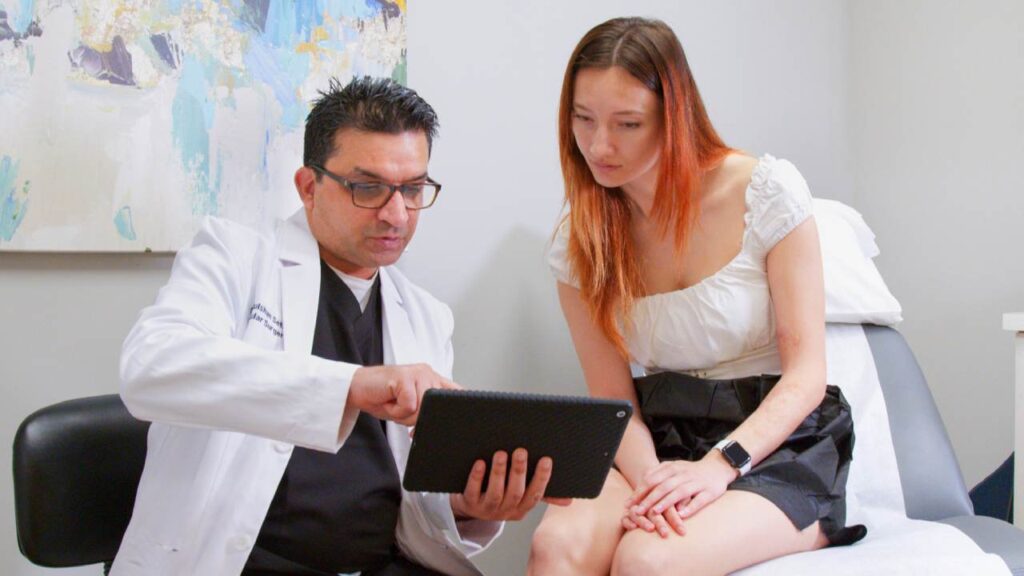1. Choose a Vein Doctor for Treatment for Varicose Veins
The vascular system is a complex network of roughly 60,000 miles of blood vessels. These include arteries, veins, and capillaries that work together but perform different tasks. Trying to treat varicose veins on your own or at a vein clinic that is not run by vein doctors is an exercise in futility, since varicosities typically stem from valve failure in deeper veins that can’t be seen from the surface.
Additionally, each patient has unique venous pathways and responds differently to various treatments, depending on their medical history. Skip the DIY tactics and cosmetic spas and click HERE to see a board certified New York vein doctor who will take a comprehensive look at your vasculature.

2. Avoid Home Treatments Until You See a Vein Doctor
There are some things certain patients can try at home to reduce symptoms of varicose veins. These might include taking pain killers, wearing compression stockings, elevating the legs while resting, or maintaining a healthy weight and active lifestyle. However, these tactics will not remove the vein, and they can actually do more harm than good, depending on your circumstances.
For instance, patients with protruding varicose veins are prone to bleeding that’s hard to control when the skin above the vein is bumped. So, if you’re taking NSAIDs for varicose vein pain, these thin your blood and can cause profuse bleeding with abrasions. In addition, compression stockings that aren’t properly sized by your vein doctor can exert inadequate or excess pressure on your veins. Elevating the legs while at rest can help, but too much rest is counterproductive for circulatory issues. So, always ask your vein doctor before trying home remedies for veins.
3. Seek an Assessment for Chronic Venous Insufficiency
The reason most people develop varicose veins is that they have a common disease called Chronic Venous Insufficiency (CVI). Valves deeper in the vein can fail, allowing blood to collect and regress through the vein, forcing the blood vessel to expand and contort (become varicose) or generate new dead-end offshoots (spider veins).
If Chronic Venous Insufficiency goes untreated, vein treatments are temporary at best, since blood will continue pooling in the feeder vein. Some vein clinics in New York aren’t equipped to detect or treat Chronic Venous Insufficiency, which is why their treatments ultimately fail. Choose our award-winning vein clinic, staffed entirely by board certified vein doctors, for an expert assessment of CVI.
4. Don’t Ignore Pain and Discomfort for Fear of Vein Surgery
Many patients visit our NY vein clinic having dealt with leg swelling, pain, and discomfort for many years, since they feared they would need vein surgery. They are so relieved to learn that surgery is rarely required to treat their varicose veins. Newer procedures like radiofrequency ablation, endovenous laser treatment, sclerotherapy, vein adhesives, and mechanochemical ablation treat varicose veins within the body, eliminating the need to surgically remove them.
Talk to our caring, Harvard-trained team about minimally invasive options for your varicose veins. Our procedures are fast, painless, and commonly covered by insurance, so don’t put up with pain and discomfort or those visible veins any longer! If you have previously treated varicose veins at a different vein clinic, we offer newer techniques to get rid of them once and for all!
5. Inquire About Minimally Invasive Options Before Surgery
While some patients with a history of blood clots or highly tortuous varicose veins require surgery, most patients respond best to minimally invasive vein treatments. However, not every vein clinic in New York offers these cutting edge procedures. Some vein doctors are only trained in surgical methods, and others are only trained in one or two, older, minimally invasive methods.
Newer techniques include pre-mixed foam sclerosants, vein adhesives, and catheters that rotate and secrete medicine for a dual approach to closing damaged veins. Before agreeing to vein stripping surgery (phlebectomy), inquire about minimally invasive alternatives like VNUS Closure Fast, Varithena, VenaSeal, and ClariVein. These techniques greatly reduce the risks, discomfort, costs, and recovery time of vein treatment.
6. Adjust Your Lifestyle to Reduce Number of Treated Veins
Lifestyle adjustments won’t erase existing spider veins or varicose veins, but they can help prevent new ones from developing. Stay active and don’t sit or stand for long periods of time without changing positions. If you have a sedentary job, take breaks to stretch, walk, climb the stairs, or do a few squats, lunges, or leg lifts. When the calf muscles contract, they help pump blood out of the leg veins, reducing pooling in the veins.
If you have leg swelling, avoid tight shoes and clothes that are constricting at the waist, and try elevating the legs above heart level while you sleep. Any steps you take to minimize the burden on your veins, like managing your weight and avoiding smoking and excessive salt intake, will help counteract the factors you can’t control, like hormonal shifts and a family history of varicose veins. Visit our acclaimed vein doctors for more tips and interventional steps to minimize vein damage and vein disease.
7. How Do I Get Rid of Varicose Veins on My Legs? Choose Us!
If you want to get rid of varicose veins on your legs quickly yet permanently, the best tip is to choose a qualified vein clinic in New York. Our premier medical clinic is fully accredited by the IAC and staffed by certified diplomates who graduated at the top of their class and trained at Ivy League universities. Our vein doctors hold multiple certifications in complementary fields, providing a more comprehensive analysis of your venous health. Don’t waste your money or time at cosmetic vein clinics that can’t treat the underlying issue. Visit our state of the art vein treatment clinic for unparalleled care.





